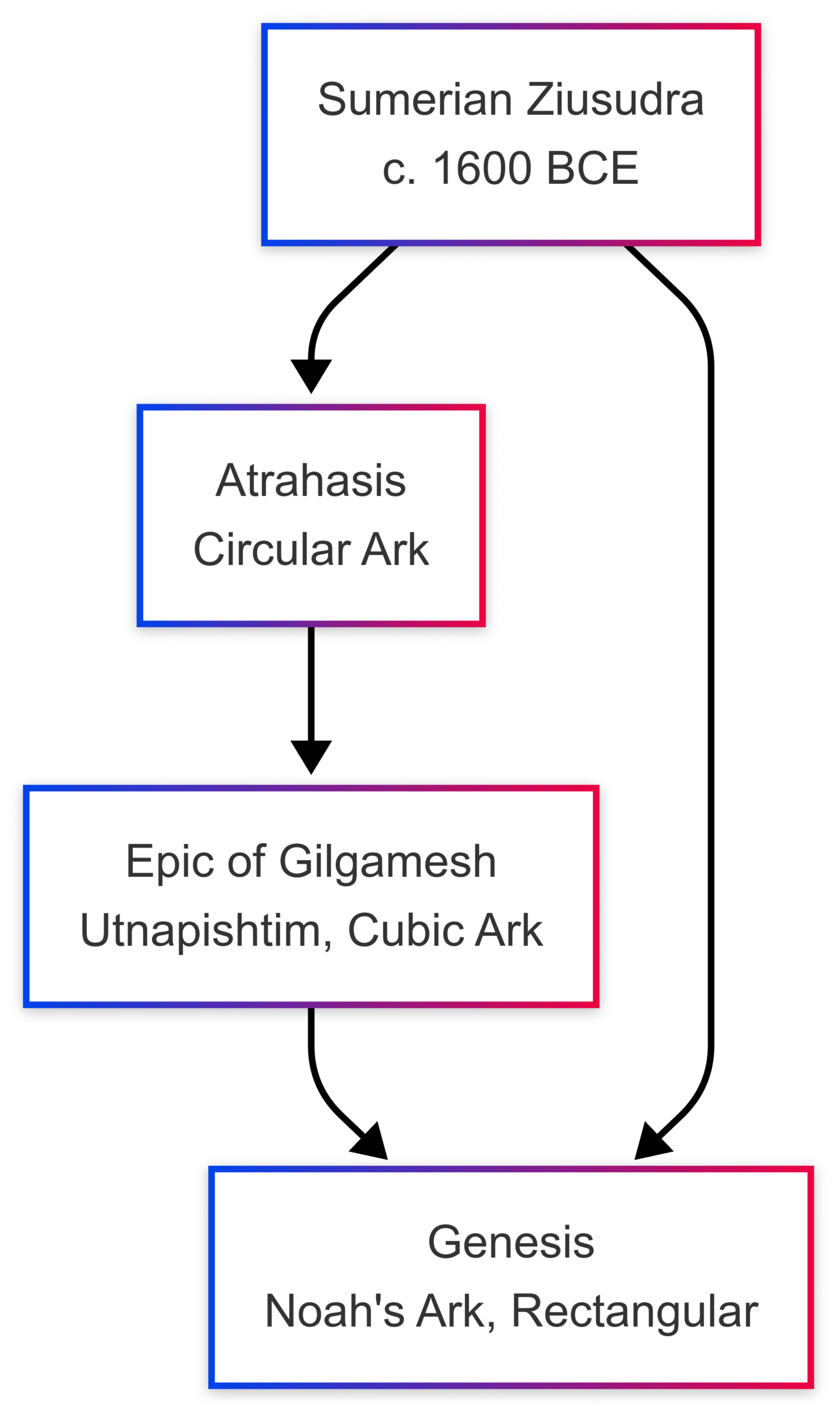Did Noah Get the Boat
Explore the story of Noah’s Ark, its biblical significance, historical context, and scientific debates. Uncover the ark’s design, animal logistics, and cultural legacy.
The story of Noah’s Ark, found in the Book of Genesis, is one of the most enduring narratives in religious and cultural history. It tells of a righteous man, Noah, chosen by God to build a massive vessel to save his family and representatives of every animal kind from a catastrophic global flood. This tale of divine judgment, survival, and renewal has captivated generations, inspiring awe, debate, and exploration. From its biblical roots to its parallels in ancient Mesopotamian myths, the story raises profound questions about faith, logistics, and historicity. This article delves into the details of Noah’s Ark, examining its biblical description, cultural origins, scientific scrutiny, and lasting legacy.
The Biblical Account of Noah’s Ark
God’s Command and Noah’s Obedience
In Genesis 6–9, the Bible describes a world steeped in wickedness, prompting God to decide to cleanse the earth with a global flood. Noah, described as a righteous man, is chosen to survive this deluge. God instructs him to build an ark to preserve his family and representatives of every animal kind. The specifications are precise: the ark must be 300 cubits long, 50 cubits wide, and 30 cubits high (approximately 440×72×43 feet), made of gopher wood, coated with pitch, and divided into three decks with a side door and a tsohar (possibly a roof or skylight).
Noah’s obedience is central to the narrative. Despite the monumental task, he faithfully follows God’s instructions, constructing the ark over an estimated 55–75 years, based on biblical genealogies. The flood comes as promised, with rain falling for 40 days and nights, and the waters surging for 150 days. Noah, his family, and the animals remain aboard for over a year, emerging only when God commands them to repopulate the earth. The story concludes with God’s covenant, symbolized by a rainbow, promising never again to destroy the earth with a flood.
Emotional and Spiritual Dimensions
Beyond the logistics, the narrative carries deep emotional weight. Noah’s experience is one of perseverance amidst uncertainty. After 40 days of rain, he and his family endured 150 days of drifting, uncertain of their destination or future. This period of waiting likely stirred a mix of gratitude for their survival, sorrow for the lost world, and fear of the unknown. The story highlights themes of faith, patience, and reliance on divine promises, resonating with readers facing their own seasons of uncertainty.
The Ark’s Design and Construction
Dimensions and Structure
The Bible provides specific dimensions for the ark, which scholars interpret as reflecting a preoccupation with numerology, particularly the number 60, common in ancient Near Eastern cultures. The ark’s 300×50×30-cubit structure translates to roughly 134×22×13 meters, making it a massive vessel for its time. Its three decks mirror the ancient Israelite conception of a three-part universe: heaven, earth, and underworld. Some scholars draw parallels between the ark and the Jewish Temple, suggesting both served as microcosms of divine order and preservation.
The material, described as “gopher wood,” remains enigmatic, possibly a loanword from Akkadian meaning a type of wood or resin. The ark was sealed with pitch (likely bitumen), ensuring its watertight integrity. While the Bible does not specify the ark’s shape, scholars propose two possibilities: a rectangular box for simplicity or a more ship-like design incorporating ancient shipbuilding principles. The latter aligns with evidence of advanced maritime technology in the ancient world, suggesting Noah’s ark was engineered for stability and buoyancy.
Construction Challenges
Building such a vessel would have required significant skill and resources. While the Bible does not specify whether Noah worked alone or with help, the scale of the project suggests he likely employed workers or enlisted his family. The construction, spanning decades, demanded expertise in woodworking, engineering, and logistics. Ancient shipbuilding techniques, such as those used in Mesopotamia, included mortise-and-tenon joints and caulking with bitumen, which Noah could have adapted. The ark’s design indicates an understanding of buoyancy, with a low center of gravity to withstand turbulent waters.
Tools and Technology
The ancient world was more technologically advanced than often assumed. Archaeological evidence from Mesopotamia reveals sophisticated woodworking tools, including saws, chisels, and adzes, which Noah could have used. The project likely required scaffolding, pulleys, and animal labor for heavy lifting. The ark’s construction reflects a high degree of craftsmanship, underscoring the ingenuity of early human societies.
The Animals on the Ark
Defining “Animal Kinds”
A key question is how many animals were aboard the ark. The Bible specifies that Noah took pairs of every “kind” of air-breathing land animal and flying creature, excluding sea creatures and possibly insects. The term “kind” is broader than modern species classifications, likely corresponding to the taxonomic level of genus or family. Studies estimate that fewer than 10,000 kinds were needed to represent the genetic diversity that produced today’s species.
For example, a single pair from the “cat kind” could account for lions, tigers, and leopards, reducing the number of animals required. Juveniles or smaller representatives were likely chosen, as they consume less food, produce less waste, and are easier to manage. Estimates suggest the ark housed between 2,000 and 16,000 animals, a manageable number given its size.
Logistics of Animal Care
Caring for thousands of animals for over a year posed significant challenges. However, low-tech solutions could have sufficed. Water could have been stored in cisterns or collected from rain, while food supplies, such as grains and dried meat, were likely stockpiled. Waste management systems, such as sloped floors or trapdoors, could have simplified cleaning. The Bible suggests divine intervention in bringing animals to the ark (Genesis 6:20), but natural methods, like hibernation or dormancy in some species, may have reduced care demands.
Were Dinosaurs Aboard?
The inclusion of dinosaurs on the ark is a contentious issue. Biblical creationists argue that dinosaurs, created on day six alongside other land animals, were represented on the ark. Given the young-earth timeline (estimating the earth at ~6,000–10,000 years old), dinosaurs coexisted with humans. Smaller or juvenile dinosaurs could have been selected, fitting within the ark’s capacity and aligning with the goal of post-flood reproduction.
Table 1: Estimated Number of Animals on Noah’s Ark
| Taxonomic Level | Estimated Kinds | Approx. Animals (Pairs) |
|---|---|---|
| Family | ~1,000 | 2,000–4,000 |
| Genus | ~10,000 | 20,000–32,000 |
| Species | Not applicable | Not applicable |
Mesopotamian Parallels
Origins of the Flood Myth
The story of Noah’s Ark has striking parallels with older Mesopotamian flood myths, suggesting a shared cultural heritage. The earliest known flood narrative, the Sumerian story of Ziusudra (c. 1600 BCE), describes a king who builds a boat to save life from a divine flood. The Babylonian Epic of Gilgamesh features Utnapishtim, whose ark is a cube with six decks, while the Atrahasis myth depicts a circular vessel. These stories predate the biblical account, which scholars believe was shaped after the Babylonian exile (6th century BCE).
Chart: Evolution of Flood Myth Arks

The near-identical deck areas of these arks (14,400–15,000 cubits²) and linguistic similarities, such as the Hebrew “tēvāh” (ark) resembling the Babylonian “ṭubbû” (oblong boat), reinforce their connection. However, the biblical narrative differs in its theological purpose, emphasizing God’s judgment on human wickedness rather than divine caprice or overpopulation control.
Cultural Context
The emergence of flood myths in Mesopotamia may be tied to historical flooding events, such as the Persian Gulf flood or the Black Sea deluge (~7,500 years ago). These localized events could have inspired oral traditions that evolved into the global flood narratives of later texts. The biblical account, while rooted in this tradition, reframes the story to highlight monotheistic themes of divine justice and covenant.
Scientific Scrutiny and Historicity
Lack of Evidence for a Global Flood
Despite its cultural significance, the story of Noah’s Ark faces scientific challenges. Geologists find no evidence of a global flood within the last 10,000 years, as sedimentary layers and fossil records do not support a single, catastrophic deluge. Localized flooding in the Middle East, however, remains a plausible inspiration for the myth. The absence of physical evidence for the ark, despite centuries of searches, further fuels skepticism.
Searches for the Ark
Searches for Noah’s Ark date back to Eusebius (c. 275–339 CE) and continue today, particularly on Mount Ararat in Turkey. Sites like the Durupınar formation have been proposed as ark remnants, but geological studies reveal them as natural sedimentary structures. Ancient historians like Josephus and John Chrysostom claimed the ark’s remains were visible in Armenia, but no verifiable artifacts have been found. Modern expeditions, often driven by biblical literalists, are criticized as pseudoarchaeology due to their lack of scientific rigor.
Practical Impossibilities
Critics highlight logistical challenges in the ark story. How did Noah gather animals from distant regions, like tigers from Asia or kangaroos from Australia? How were predators and prey kept separate? How did a small family manage thousands of animals for over a year? While biblical creationists propose solutions like juvenile animals and low-tech care systems, skeptics argue these do not fully address the scale of the task. The story’s reliance on divine intervention often bridges these gaps for believers.
Religious and Cultural Interpretations
Judaism and Christianity
In Jewish tradition, the Talmud portrays Noah as a righteous man who warned his neighbors of the flood, only to be mocked. The ark’s animals were divinely gathered, and their behavior was exemplary, with no procreation during the voyage. Christian interpretations, such as those by Augustine and Hippolytus, view the ark as a symbol of Christ and the Church, with its dimensions reflecting the human body or divine order. The dove and olive branch symbolize the Holy Spirit and peace, enduring as religious and secular symbols.
Islam and Other Traditions
In Islam, the Quran refers to Noah’s Ark as a “safina” (ship) or “fulk” (vessel), built of teak and shaped like a bird’s belly. The ark’s journey, starting in Kufa, Iraq, and ending at Mount Judi, integrates Islamic geography and theology. The Baháʼí Faith interprets the ark symbolically, representing Noah’s teachings preserving spiritual life. Gnostic and Mandaean texts offer alternative perspectives, emphasizing divine selection and survival.
Modern Cultural Legacy
Reconstructions and Attractions
The story of Noah’s Ark continues to inspire modern interpretations. Johan’s Ark in the Netherlands and the Ark Encounter in Kentucky, both built to biblical dimensions, aim to recreate the ark’s scale and educate visitors. These projects reflect the story’s enduring appeal, blending faith, education, and tourism.
Pop Culture and Social Media
The phrase “Noah, get the boat” has become a humorous social media meme, often used to comment on humanity’s moral failings, as seen in the subreddit r/NoahGetTheBoat. This modern reinterpretation underscores the story’s relevance, framing it as a call for renewal in a troubled world.
Conclusion
The story of Noah’s Ark is a multifaceted narrative that blends theology, history, and cultural heritage. Its biblical account emphasizes faith, obedience, and divine promise, while its Mesopotamian roots reveal a shared human fascination with survival and renewal. Scientific scrutiny highlights the story’s challenges, yet its symbolic power endures across religions and cultures. Whether viewed as historical fact, inspired myth, or spiritual allegory, Noah’s Ark continues to spark curiosity, debate, and inspiration, reminding us of humanity’s resilience and hope in the face of overwhelming odds.
Happy Boating!
Share Did Noah Get the Boat with your friends and leave a comment below with your thoughts.
Read Finding the Best Seadek Alternative for Your Boat until we meet in the next article.






